The AMD Ryzen 3 3300X and 3100 CPU Review: A Budget Gaming Bonanza
by Dr. Ian Cutress on May 7, 2020 9:00 AM EST*We are currently in the middle of revisiting our CPU gaming benchmarks, but the new suite was not ready in time for this review. We plan to add in some new games (Borderland 3, Gears Tactics) and also upgrade our gaming GPU to a RTX 2080 Ti.
Gaming: Ashes Classic (DX12)
Seen as the holy child of DirectX12, Ashes of the Singularity (AoTS, or just Ashes) has been the first title to actively go explore as many of the DirectX12 features as it possibly can. Stardock, the developer behind the Nitrous engine which powers the game, has ensured that the real-time strategy title takes advantage of multiple cores and multiple graphics cards, in as many configurations as possible.
As a real-time strategy title, Ashes is all about responsiveness during both wide open shots but also concentrated battles. With DirectX12 at the helm, the ability to implement more draw calls per second allows the engine to work with substantial unit depth and effects that other RTS titles had to rely on combined draw calls to achieve, making some combined unit structures ultimately very rigid.
Stardock clearly understand the importance of an in-game benchmark, ensuring that such a tool was available and capable from day one, especially with all the additional DX12 features used and being able to characterize how they affected the title for the developer was important. The in-game benchmark performs a four minute fixed seed battle environment with a variety of shots, and outputs a vast amount of data to analyze.
For our benchmark, we run Ashes Classic: an older version of the game before the Escalation update. The reason for this is that this is easier to automate, without a splash screen, but still has a strong visual fidelity to test.
Ashes has dropdown options for MSAA, Light Quality, Object Quality, Shading Samples, Shadow Quality, Textures, and separate options for the terrain. There are several presents, from Very Low to Extreme: we run our benchmarks at the above settings, and take the frame-time output for our average and percentile numbers.
All of our benchmark results can also be found in our benchmark engine, Bench.
| AnandTech | IGP | Low | Medium | High |
| Average FPS | 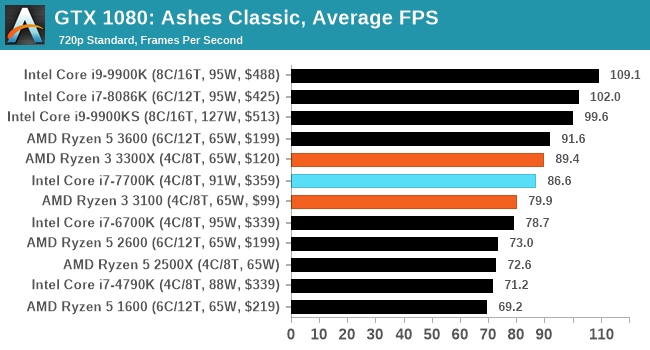 |
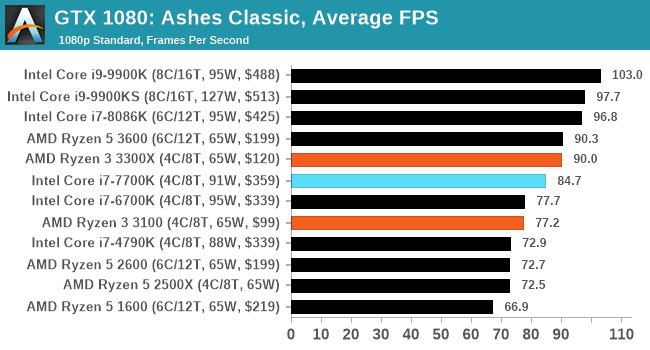 |
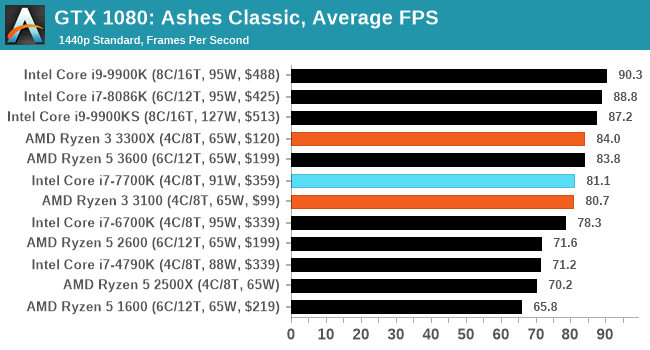 |
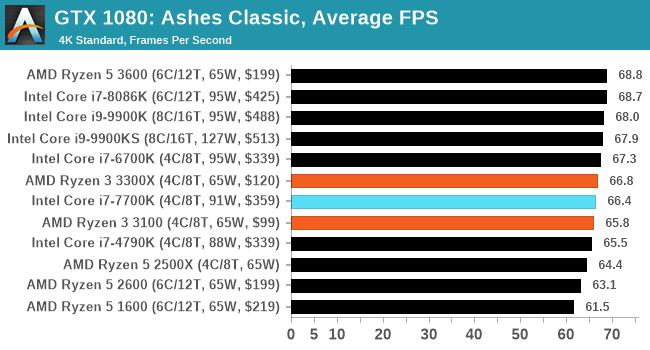 |
| 95th Percentile |  |
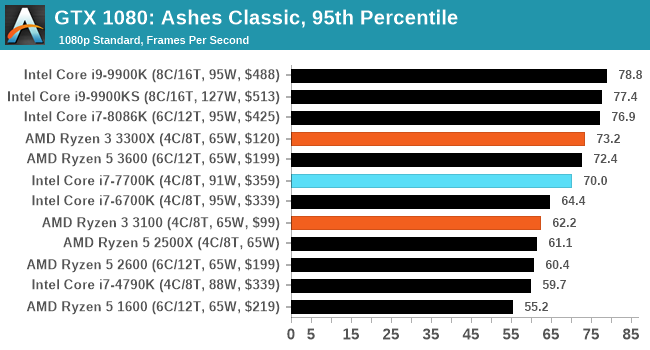 |
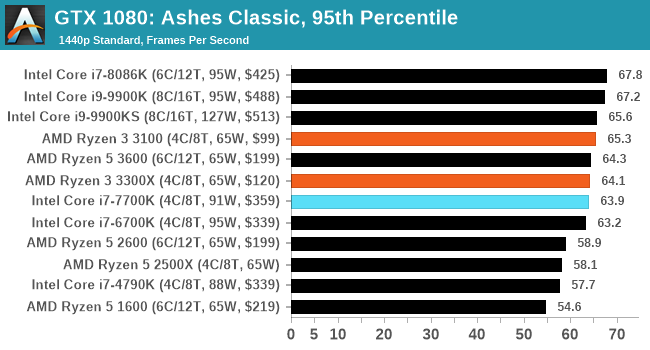 |
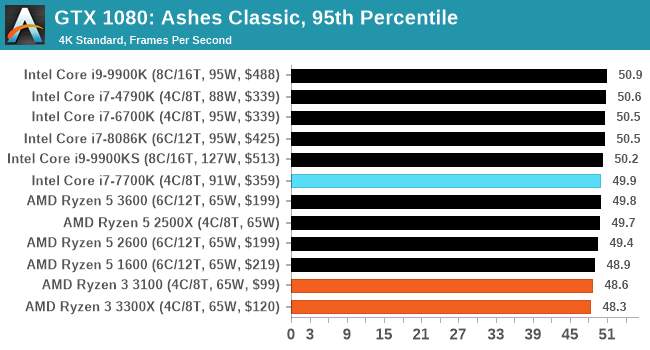 |


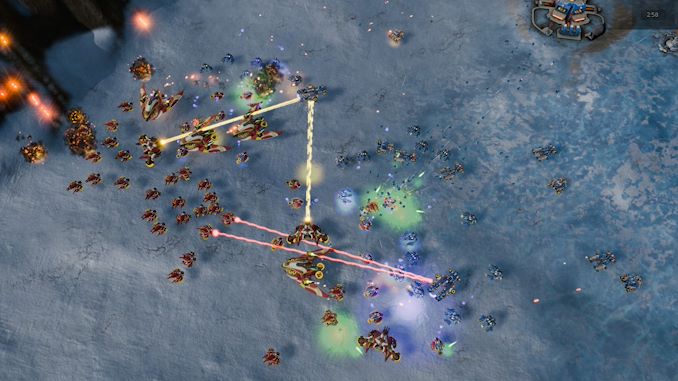









249 Comments
View All Comments
Spunjji - Monday, May 11, 2020 - link
Those were the days!stardude82 - Thursday, May 7, 2020 - link
What I get from this is my 9 year old Sandy Bridge i7 is probably good enough for modern games when not playing with a $1000 video card.Spunjji - Monday, May 11, 2020 - link
Quite correct, if it's overclocked. There are a few exceptions, though, and there will be more over the next few years. Sandy was a beast.stardude82 - Thursday, May 7, 2020 - link
Hey, Ian, for my edification, what happens if you turned HT/SMT for one of the quad-cores? Do modern games tank?boozed - Thursday, May 7, 2020 - link
It's been a while since I've seen game benchmarks at 800x600!watzupken - Thursday, May 7, 2020 - link
It is impressive that a low end AMD chip soundly beat the ex flagship, 7700K. The 3300X is certainly the better option to go for between the 2 entry level Ryzen.Alexvrb - Thursday, May 7, 2020 - link
I have to chuckle a bit when I see Dwarf Fortress as a "new" benchmark. I doubt it uses any modern processor to its fullest.Ian Cutress - Friday, May 8, 2020 - link
Over the last couple of years it's been requested a few times. I finally got around to sorting out a benchmark for it and adding it into our automated script. Seems to work almost flawlessly on any system I'm testing it on. That big gen test can take 1hr+ though.Deicidium369 - Friday, May 8, 2020 - link
Dwarf Fortress is the gaming equivalent to dentists - pure sadismSpunjji - Monday, May 11, 2020 - link
The results seem to indicate that it prefers clock speed over either threads or IPC.